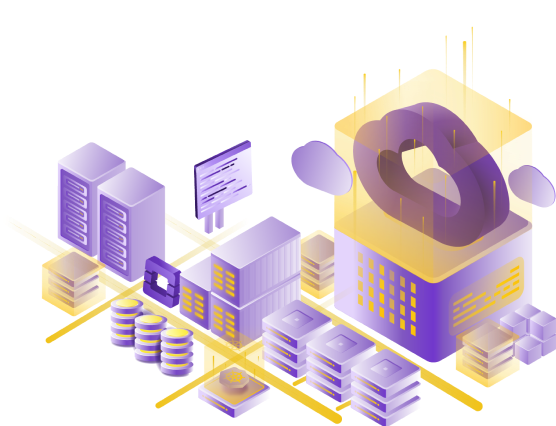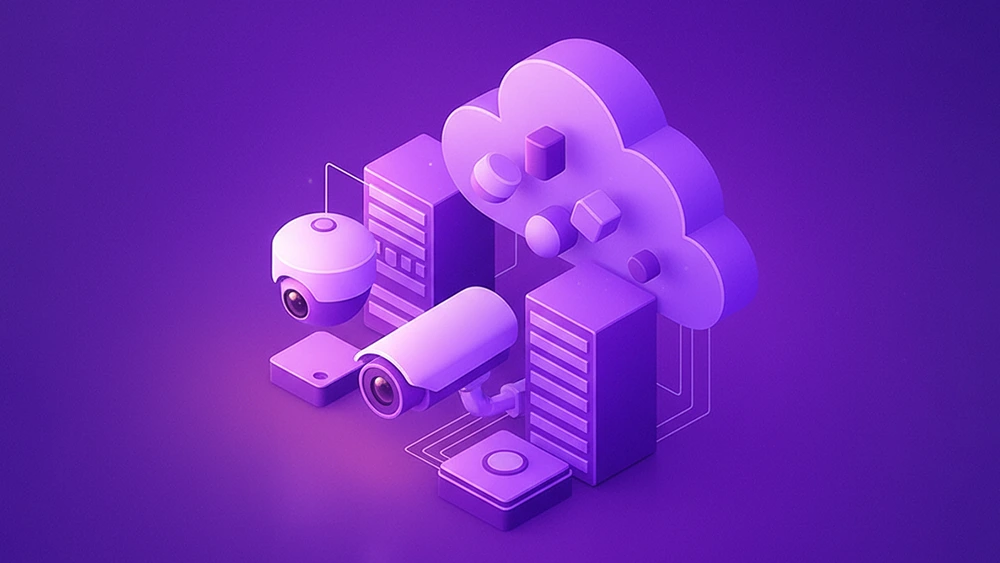Top features to look for in open-source cloud providers
Technology leaders have embraced cloud computing for significant time and cost savings. The cloud computing model gives teams on-demand access to configurable computing resources such as servers, storage, and network services. Cloud providers such as AWS, Google Cloud Platform, and Microsoft Azure each offer proprietary cloud services that enable you to quickly develop solutions and then pay for the cloud services you need without the hassles or costs of in-house data centers and cloud infrastructure management. On the downside, while vendor-managed cloud services offer convenience and a way to quickly get started, vendor lock-in combined with complex consumption-driven pricing can eventually derail projects as they scale up. Restrictive licensing agreements of many big tech cloud providers can also introduce too much risk and unpredictability.
Open-source is a type of free software that anyone can see, modify, and distribute. It is developed by a worldwide community of contributors and is not dependent on proprietary, vendor-owned licensing. Much of cloud computing is based on the concept of virtual machines and virtual networking, where physical computers and networking components are emulated through software and managed as code. Open-source cloud computing uses open-source code to power cloud infrastructure software and is a viable alternative to proprietary big tech cloud providers.
OpenStack is the leading open-source cloud management platform and provides a working alternative to proprietary clouds offered by big tech. It is an open-source cloud computing platform that provides Infrastructure as a Service (IaaS) for public and private clouds. It is a highly scalable solution that combines multiple components and a common application programming interface (API) to manage hardware pools of processing, storage, and networking resources throughout a data center.
Organizations running OpenStack are typically operating private clouds and have the in-house resources and expertise to support data center deployments. Public cloud providers also run OpenStack to power cloud computing services for their end users.
As of 2024, Rumble Cloud is a new entrant in the open-source cloud provider space, offering essential cloud services with a unique Resource Tier pricing model. Rumble Cloud is based on OpenStack and other open-source technologies, providing Linux-based virtual machines (VMs) and a full stack of networking, load balancing, routing, and storage services including S3 object storage.
Top five features for open-source cloud compute platforms
Rumble Cloud’s unique offering in the OpenStack space consists of a customized deployment of the core OpenStack offering, including the Rumble Cloud Console user interface and the core compute, network, and storage services. All services, including premium NVMe volumes and vCPUs using the dedicated latest generation AMD EPYC™ processors, are bundled into each tier for a monthly price, without additional charges for usage, image types, load balancing, or routing. These core services are bolstered by a resource automation service and a service to support the deployment and integration of container orchestration engines such as Kubernetes. Because it’s running on OpenStack, Rumble Cloud supports the use of the OpenStack Client for command line operations and the OpenStack RESTful API.
Here are the top open-source cloud computing features offered by Rumble Cloud running OpenStack.

OpenStack
OpenStack is composed of several interrelated projects that handle different aspects of the cloud environment, such as compute, storage, networking, and more. It offers native APIs and also supports Amazon EC2 and S3 APIs, which assist in hybrid cloud deployments and integration with existing cloud services and management tools. The networking service supports advanced networking features and allows for highly customized network implementations. The RESTful API and command line tools enable programmatic integration and automation with all cloud services.
OpenStack is widely adopted and supported by organizations throughout the world including major telecommunications companies, NASA, Rackspack, and many other users. Users can build solutions on OpenStack based on existing tools, APIs, and documentation developed and maintained by the global OpenStack community. Cloud providers such as Rumble Cloud manage the backend infrastructure and deployments of OpenStack, ensuring that the underlying software is secure, reliable, up-to-date, and online.
Virtual machines
Rumble Cloud’s Compute service enables users to rapidly provision dedicated virtual machine (VM) instances onto private or public networks. You can use one of several default Linux distributions or bring your own operating system. Compute service supports image snapshots for point-in-time copies of both the data and state of the VM instance, enabling the rapid restoration or cloning of configured machines. Rumble Cloud does not charge for usage or instance types, but instead provides Resource Tiers with sets of virtual CPUs (vCPUs) and available storage capacity and throughput. You get the same high-performance dedicated vCPUs in each Rumble Cloud Resource Tier, starting with two vCPUs in the lowest-priced tier. This model lets you mix and match VM images with the processors available in your tier.
Networking
Rumble Cloud’s Network service encompasses an array of virtual network devices that are included with each Resource Tier. In addition to private networks, you can provision load balancers, routers, ports, security groups, and IP addresses. There are no additional charges for provisioning or usage of network resources in Rumble Cloud. The Rumble Cloud Console provides a network topology dashboard to view your network configuration. Having networking resources available and bundled within each Resource Tier offers an opportunity for significant cost savings versus consumption-based pricing.
Object storage
Whether for stashing log files, data archives, or media files, object storage has emerged as a simple, cost-effective means to work with file storage in the cloud. Rumble Cloud’s object storage service uses the same S3 standard developed by AWS, enabling you to work with common API operations and existing tools to programmatically manage your cloud storage. Each Resource Tier in Rumble Cloud provides 1 TB of data storage, with additional storage options available.
Kubernetes service
Kubernetes, often abbreviated as K8s, is an open-source container orchestration platform that automates the deployment, scaling, and management of containerized applications. Kubernetes is designed to facilitate both declarative configuration and automation, which it does by grouping containers that make up an application into logical units for easy management and discovery.
Rumble Cloud’s Kubernetes service works in tandem with Automation, Compute, Network, and Storage services to help automate and provision container clusters and their virtual machines, private networks, routers, load balancers, and IP addresses. It can use Kubernetes or other container orchestration engines and integrates seamlessly with other cloud services.
Strategic considerations when building with Rumble Cloud
Open-source technologies
Rumble.com chose early on to build and manage its infrastructure in-house and later parlayed that expertise and investment into the public cloud offering that is Rumble Cloud. Rumble Cloud is built on the same solid, high-performing infrastructure that powers the Rumble.com video service. Rumble’s philosophy is to build technology that supports and protects the free and open internet. These values translate into clear and transparent pricing and fair and neutral terms of service. When building on Rumble Cloud, there aren’t any complex or obfuscated fees that can make planning and budgeting risky and unexpectedly expensive.
High-performing Infrastructure
Rumble chose OpenStack to power Rumble Cloud not only because open-source technologies align closely with Rumble’s mission to protect the free and open internet, but also because it is one of the most robust, proven, and mature cloud infrastructure platforms used by some of the world’s largest technology organizations.
Independent Infrastructure
The use of OpenStack and other open-source technologies ensures that any projects built on Rumble Cloud are not bound to any proprietary technologies or licensing. Rumble Cloud doesn’t offer contracts or long-term commitments, so you’re always free to pay for the value that works best for you. Whether running a private cloud, a hybrid cloud model, a high availability architecture, or distributed internet applications, Rumble Cloud’s Resource Tiers can meet the demands for enterprise cloud computing solutions.
High-Performance Computing. Predictable Pricing. Unlimited Usage.
Rumble Cloud is designed to empower businesses to become independent from incumbent hyperscalers’ unfair pricing, vendor lock-in strategies, and censorship. Available by self-service or with the assistance of one of our Managed Services Providers, Rumble Cloud delivers a portfolio of essential cloud computing services, including virtual machines and Kubernetes orchestration, block and object storage, load balancers, and a virtual private cloud option.
Rumble Cloud’s vision is to provide the most predictable and affordable pricing in the market to allow businesses to regain control of their IT budgets. Our Resource Tiers deliver a dedicated pool of virtual resources, including assigned tier memory aligned to a dedicated CPU. Designed for a broad array of workloads, Resource Tiers offer monthly plans at a fixed price with unlimited usage to combat the price predictability pain points commonly felt with a consumption-based model. You can scale up or down as needed, with no surprises on your monthly bill since you are in complete control.


